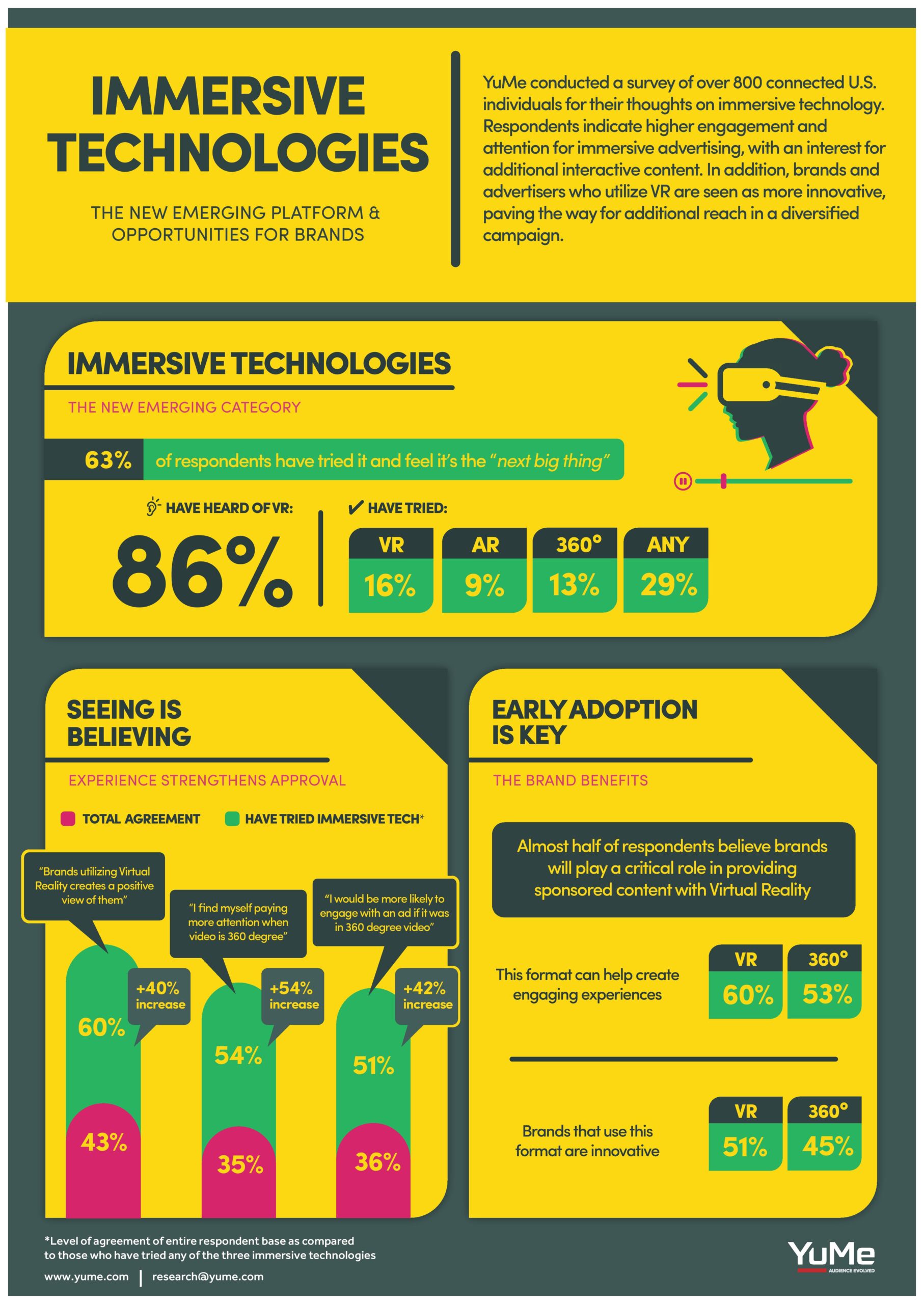Tag: Advertising
-

Infographic – Virtual Reality Trending in 2017
2017 is expected to be a turning point for Virtual Reality and Augmented Reality. The PlayStation VR, as well as a variety of other VR devices, made their debut last year and since, have given consumers insight as to all that VR has to offer. As of 2016, one third of consumers found the concept…
-

Infographic: Opportunities for Brands with Immersive Technologies
Immersive technology refers to technology that blurs the line between the physical world and the digital or simulated world, thereby creating a sense of immersion. This includes using hardware to simulate one or more of the five senses to create perceptually-real sensations. (I.e. From using VR headsets for visuals to implementing artificial smells and tastes.)…
-

Infographic: How We Use AR
Both Virtual Reality and Augmented Reality are growing in popularity across a variety of industries. The reputation of both is that they are primarily used for gaming and entertainment; however AR is actually being used to assist doctors, engineers, teachers, and more in their professions. By introducing AR into the classroom, students will have a new way to learn by…
-

Infographic – The History and Future of Augmented Reality
Unlike Virtual Reality, Augmented Reality does not immerse its user into a new environment; it enhances one’s reality by overlaying digital information onto things being viewed on a digital device. Though AR is rising in popularity in 2016, variations of it have been around since 1957 with Mortin Helig’s Sensorama machine as one such example.…
-

Infographic: Future of VR in Marketing
Virtual Reality has great potential in positively influencing the Marketing world. Well-known companies including Facebook, Google, and Microsoft investing in VR has caused a rise in awareness due to their large audience base. Some brands have already incorporated VR into their marketing campaigns. Clothing retailer, Topshop, created a campaign that virtually transported users in their UK-based…
-

Infographic – VR and AR in Healthcare
Virtual Reality and Augmented Reality are both being used in a variety of industries, including education, sports, tourism, and even healthcare. The video game industry is projected to earn the highest revenue at $11.6 billion, but the healthcare industry is right behind them with $5.1 billion. VR and AR can be used for a variety…



